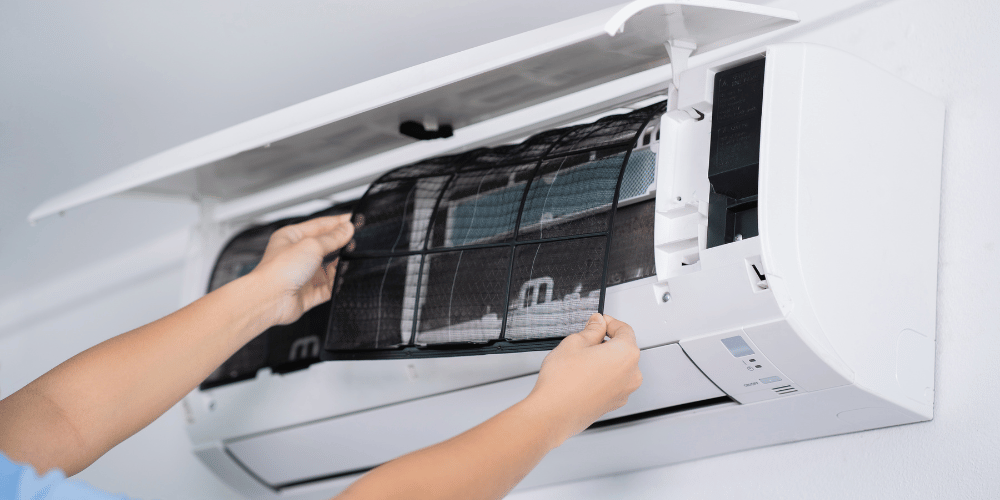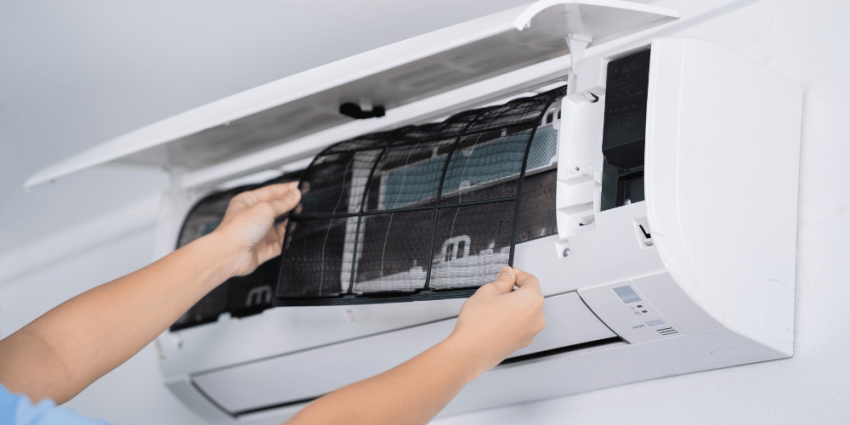It may seem odd to be thinking about air conditioning when the weather is cold, but setting your AC correctly in the winter can help you save on energy costs and create a more comfortable environment in your home. But what temperature should you set it at? In this blog post, we will explore what temperature to set your air conditioner in winter and how doing so can help maximize energy efficiency. We will also discuss the benefits of using a smart thermostat, which can make setting the right temperature even easier. So let’s get started!
How does temperature affect indoor air quality?
The temperature of your indoor air can have a big impact on its quality. If the air is too cold, it can dry out your sinuses and make you more susceptible to illness. If the air is too hot, it can promote the growth of mold and mildew. The ideal temperature for indoor air quality is between 68 and 72 degrees Fahrenheit.
A key factor in improving indoor air quality is controlling the relative humidity. The EPA recommends keeping indoor relative humidity levels between 30 and 50 percent. Too much humidity can promote the growth of mold and mildew, while too little humidity can dry out your mucous membranes, making you more susceptible to colds and other illnesses.

What is the ideal temperature for winter?
In order to answer the question of what the ideal temperature for winter is, one must first understand how heating and cooling systems work. A typical home heating and cooling system consists of a furnace or heat pump that is used to heat the air and a central air conditioner that is used to cool the air. The furnace or heat pump circulates the air through a system of ducts that deliver the heated or cooled air to each room of the house.
The thermostat is the device that controls the temperature of the air in your home. It is important to set the thermostat at the right temperature in order to maintain a comfortable environment inside your home. In general, it is recommended that you set your thermostat at 68 degrees Fahrenheit (20 degrees Celsius) when you are home during the day and awake. At night or when you are away from home, you can set your thermostat lower, such as 60 degrees Fahrenheit (15 degrees Celsius).
Now that we understand how heating and cooling systems work, we can answer the question of what the ideal temperature for winter is. The best temperature for winter is whatever makes you most comfortable while indoors. Keep in mind that it is important not to set your thermostat too low, as this can cause your furnace to work overtime and increase your energy bills.
How to set your air conditioner in winter
Most people don’t know that their air conditioner can be used in the winter, but it can! Just set the thermostat to “air condition” mode and the desired temperature, and let the unit do its job.
If you have a newer air conditioner, you may also have a “heat” mode. This can be used to supplement your home’s heating system by providing extra warmth on those particularly cold days.
So, what temperature should you set your air conditioner in winter? We recommend starting at around 68 degrees Fahrenheit and adjusting as needed based on comfort level.
Remember, your air conditioner is designed to cool your home, so don’t be afraid to experiment with different temperatures until you find what works best for you and your family.
How low should you set your AC in winter?
Most people think that they should turn their air conditioners off in the winter. But, did you know that your AC unit can actually act as a heater?
If you set your AC unit to low in the winter, it will help to heat up your home. However, you don’t want to go too low or else your home will become too humid. The ideal temperature setting for your AC unit in winter is around 70 degrees Fahrenheit.
And remember, if you need any help setting your AC unit, contact a professional HVAC technician. They can help you find the perfect temperature settings for your home.
What are the benefits of setting your AC lower in winter?
There are several benefits to setting your air conditioner lower in winter. One benefit is that it can help save on energy costs. When the temperatures outside are colder, the air conditioner doesn’t have to work as hard to keep the inside of your home comfortable, which can lead to lower energy bills.
Another benefit of setting your AC lower in winter is that it can help improve indoor air quality. By circulating fresh, cold air throughout your home, you can help reduce the amount of dust and other allergens in the air. This can be especially beneficial for people who suffer from allergies or asthma.
Finally, setting your AC lower in winter can also help extend its lifespan. By not overworking the unit, you can help it last longer before needing repairs or replacement.
Are there any risks to setting your AC lower in winter?
There are a few risks to setting your AC lower in winter. If the temperature outside is very cold, the AC unit may freeze up. This can damage the unit and lead to costly repairs. Additionally, if the AC is set too low, it may not be able to properly dehumidify the air inside your home, leading to a stuffy or humid environment.
Finally, setting your AC too low can cause drafts in the home, which can be uncomfortable and may also lead to higher energy bills.

How to properly maintain your AC unit in winter
It’s important to properly maintain your AC unit in winter to prevent any issues when you need it most. Here are a few tips on how to do so:
-Keep the area around your AC unit clean and free of debris. This will help ensure proper airflow and prevent any potential damage.
-Check the condition of your AC unit’s filters and replace them if necessary. Dirty filters can restrict airflow and cause your unit to work harder than necessary.
-Inspect your AC unit for any signs of damage or wear and tear. If you notice anything, be sure to have it repaired before using it again.
By following these simple tips, you can help keep your AC unit in top condition all winter long!
Conclusion
Maintaining the correct temperature in your home during the winter months is important for both comfort and efficiency. With a few simple steps, you can easily set your air conditioner to the most appropriate temperature for winter. By keeping these tips in mind when setting your air conditioner’s thermostat, you can ensure that you are comfortable without wasting any energy or money.










Leave a Reply